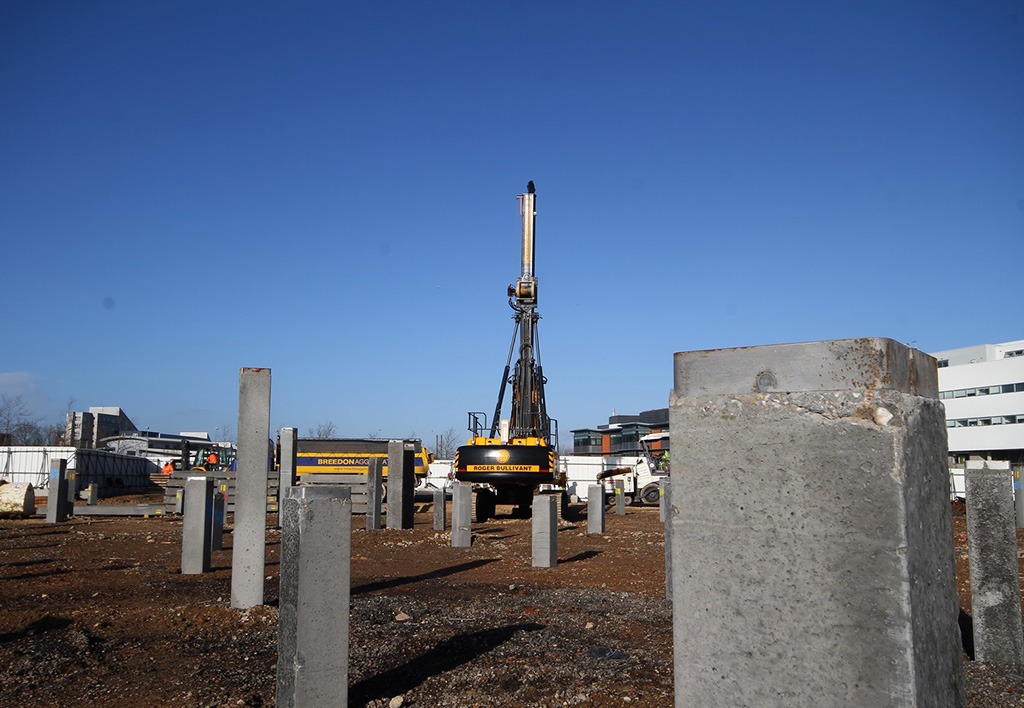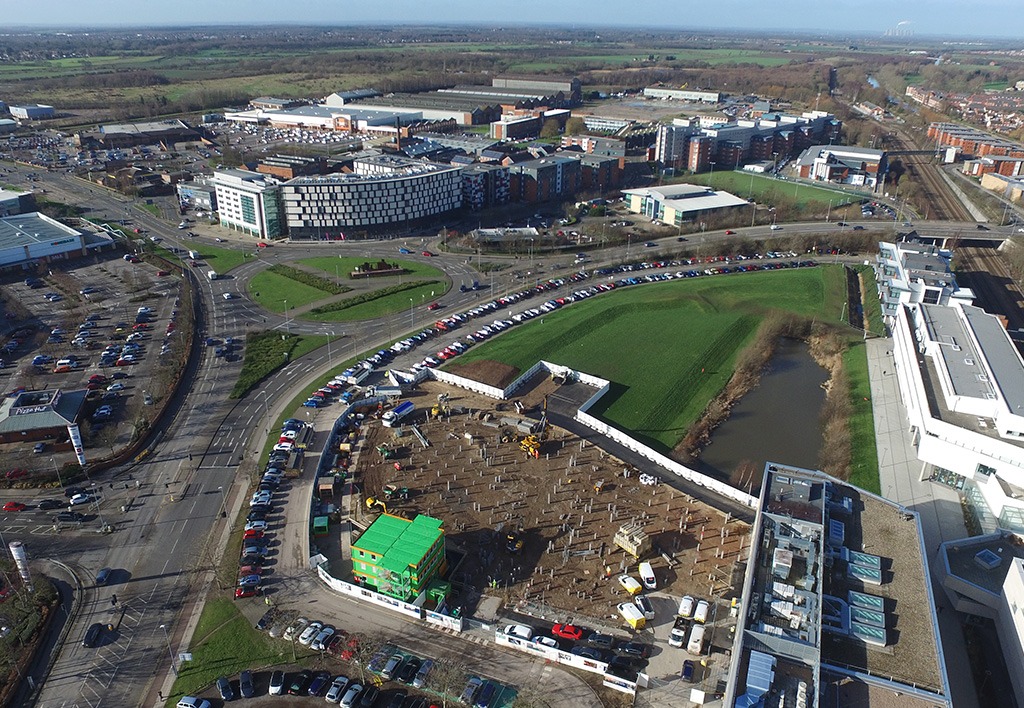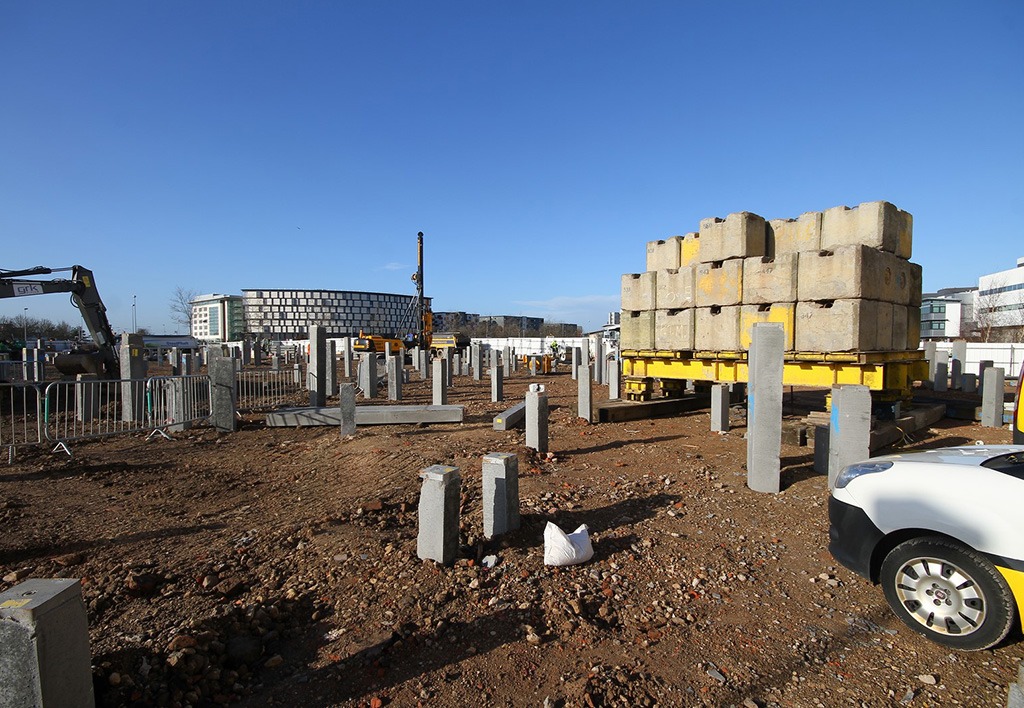MAIN CONTRACTOR
BAM
CLIENT
University of Lincoln
SCOPE OF WORKS
Precast piling
PROJECT BRIEF
Foundation Engineers Roger Bullivant Limited (RB) were successful in securing an extension to the existing Department of Engineering at Lincoln University. The extension was to include laboratories, workshops, a 500-seat lecture theatre, seminar rooms and office space.
KEY ISSUES
As the site was part of the existing university, the piling system needed to take account of the surrounding environment. Therefore, minimal disturbance and speed of installation were key factors that needed consideration.
After consultation between RB, BAM and the Consulting Engineer the initial proposed foundation solution of continuous flight auger (CFA) piles was changed to driven precast concrete piles offering a quicker, more cost-effective system.
The project involved the installation of 343no 250mm² and 300mm² driven precast concrete piles to cater for loads of up to 400kN and 650kN respectively.
SOLUTION
- Due to the perceived potential issues of noise and vibration associated with driven piles close to an existing building an estimate for CFA piles was initially requested by BAM for the extension at an early stage. It was however established that the CFA option would not take advantage of the sand and gravel founding strata identified at shallower depth and the potential cost savings this could achieve.
- It was not possible to illustrate to main contractor BAM through empirical prediction formula or vibration monitoring that vibration associated with a driven pile would not exceed guidance values stated in BS5228 Code of practice for vibration control (Part 2). However, RB suggested vibration damage would be unlikely, bearing in mind the facade of the existing building was to be removed to form the link and that drive resistance would be low based on the strength and nature of the soft alluvial deposits to a depth of 5.0m.
- RB also maintained levels of vibration could be managed to the lowest achievable through careful control of the hammer drop height.
- Based on the findings the decision was made to use a driven system; it was agreed that piles in the first two gridlines would be piled at a weekend with the presence of a watching brief and that works would be suspended should any concerns be raised. All piles achieved a design set or refusal between 7.0-9.0m and were installed to meet the client’s programme requirements. There were no issues regarding vibration.
- Dynamic load testing illustrated ultimate capacities in excess of twice safe working load. A static load test on a working pile was also carried out on a 650kN safe working load pile which achieved deflections of 3.39mm at working load and 5.75mm at test load.





